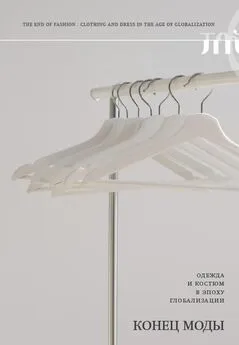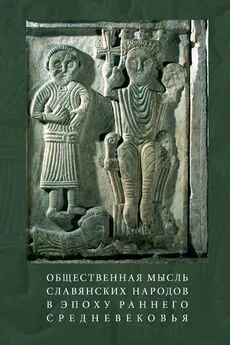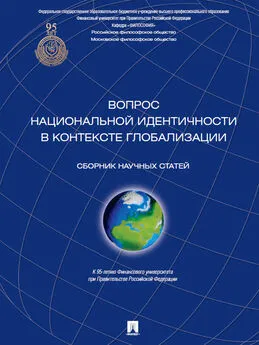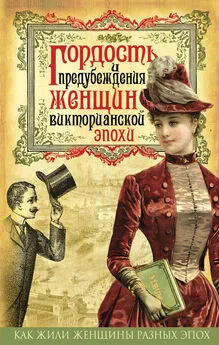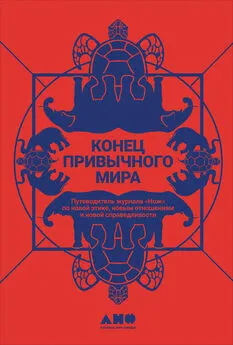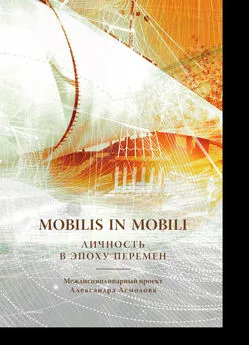Коллектив авторов - Конец моды. Одежда и костюм в эпоху глобализации
- Название:Конец моды. Одежда и костюм в эпоху глобализации
- Автор:
- Жанр:
- Издательство:Литагент НЛО
- Год:2020
- Город:Москва
- ISBN:9785444814048
- Рейтинг:
- Избранное:Добавить в избранное
-
Отзывы:
-
Ваша оценка:
Коллектив авторов - Конец моды. Одежда и костюм в эпоху глобализации краткое содержание
Конец моды. Одежда и костюм в эпоху глобализации - читать онлайн бесплатно ознакомительный отрывок
Интервал:
Закладка:
501
Сков Л. Мечты малых стран; Crewe L., Forster Z. Markets, Design, and Local Agglomeration: The Role of the Small Independent Retailer in the Workings of the Fashion System // Environment and Planning. 1993. D 11, no. 2. Pp. 213–229; Lazzeretti L., Capone F., Casadei P. The Role of Fashion for Tourism: An Analysis of Florence as a Manufacturing City and Beyond // Tourism in the City: Towards an Integrative Agenda on Urban Tourism, ed. N. Bellini, C. Pasquinelli. Switzerland: Springer International, 2017. eBook Edition. Pp. 207–220; Rantisi N. The Prospects and Perils of Creating a Viable Fashion Industry // Fashion Theory: The Journal of Dress, Body & Culture. 2011. Vol. 15.4. Pp. 259–266.
502
Crewe, Gregson, Brooks. The Discursivities of Difference. P. 73.
503
Ibid. P. 75.
504
Ibid. P. 76.
505
Finnigan K. Nordic Chic: 8 Scandi Brands You Need to Know // The Telegraph. 2016. January 30. www.telegraph.co.uk/fashion/brands/nordic-chic-8-scandi-brands-you-need-to-know/ (accessed 14.08.2017).
506
Weller S. Beyond «Global Production Network» Metaphors: Australian Fashion Week’s Trans-sectoral Synergies // Growth and Change. 2008. 39, no. 1. Pp. 104–122.
507
Weller S. Consuming the City: Public Festivals and Participatory Economies in Melbourne, Australia // Urban Studies. 2013. 50, no. 14. Pp. 2855–2868.
508
Niessen S., Leshkovich A. M., Jones C. (eds) Re-Orienting Fashion: The Globalization of Asian Fashion. Oxford; New York: Berg, 2003.
509
Skov L. Fashion Flows – Fashion Shows: The Asia Pacific Meets in Hong Kong // Rogue Flows: Trans-Asian Cultural Traffic / Еd. K. Iwabuchi, M. Thomas. Hong Kong: Hong Kong University Press, 2004. Pp. 221–247.
510
Molloy M., Larner W. (eds) Fashioning Globalisation: New Zealand Design, Working Women and the Cultural Economy. Chichester, West Sussex: John Wiley & Sons, 2013; Weller S. Creativity or Costs? Questioning New Zealand’s Fashion Success: A Methodological Intervention // Journal of Economic Geography. 2013. 14, no. 4. Pp. 721–737; Anderson R. 10 New Zealand Fashion Designers and Brands You Should Know // The Culture Trip. 2016. October 31. theculturetrip.com/pacific/new-zealand/articles/top-10-new-zealand-fashion-designers-you-should-know/ (accessed 22.11.2016).
511
Craik J. Fashioning Australian: Recent Reflections on the Australian Style in Contemporary Fashion // Journal of Asia-Pacific Pop Culture. 2017. 2, no. 1. Pp. 30–52.
512
Bonadio M. C. Brazilian Fashion and the «Exotic» // International Journal of Fashion Studies. 2014. 1, no. 1. Pp. 57–74.
513
Reinach. National Identities and International Recognition. Pp. 267–272.
514
Слова директора по моде дублинского магазина Arnotts, цит. по: Де Клер Ш. Мода на периферии. С. 62.
515
Koblin J. Reformation, an Eco-label the Cool Girls Pick // New York Times. 2014. December 17.
516
Pedersen, Gwozdz. From Resistance to Opportunity-Seeking. P. 247.
517
Falasca-Zamponi S. Waste and Consumption: Capitalism, the Environment, and the Life of Things. New York: Routledge, 2011. Pp. 19–22.
518
Engel A. Colouring Markets: The Industrial Transformation of the Dyestuff Business Revisited // Business History. 2012. 54, no. 1. Pp. 10–29; Federico P. J. The Invention and Introduction of the Zipper // Journal of the Patent Office Society. 1946. 28, no. 12. Pp. 855–875; Godley A. Selling the Sewing Machine around the World: Singer’s International Marketing Strategies, 1850–1920 // Enterprise and Society. 2006. 7, no. 2. Pp. 266–314; Pearson G. J. Innovation in a Mature Industry: A Case Study of Warp Knitting in the UK // Technovation. 1989. 9, no. 8. Pp. 657–679.
519
Edgerton D. The Shock of the Old: Technology in Global History since 1900. London: Profile Books, 2007.
520
Barthes R. Système de la mode. Paris: Seuil, 1967. Pp. 330–338.
521
Pouillard V. Design Piracy in the Fashion Industries of Paris and New York in the Interwar Years // Business History Review. 2011. 85, no. 2. Pp. 319–344.
522
Sklar K. K. The Consumers’ White Label Campaign of the National Consumers’ League 1898–1918 // Getting and Spending: European and American Consumer Societies in the Twentieth Century / Еd. S. Strasser, Ch. McGovern, M. Judt. Cambridge: Cambridge University Press, 1998. Pp. 17–35; Chessel M.-E. Women and the Ethics of Consumption in France at the Turn of the Twentieth Century // The Making of the Consumer: Knowledge, Power and Identity in the Modern World / Еd. Frank Trentmann. Oxford: Berg, 2006. Pp. 81–98.
523
«Позолоченный век» (Guilded Age) – период в истории США (приблизительно с 1870‐х годов по начало ХХ века), для которого были характерны быстрый экономический рост и увеличение численности населения за счет иммигрантов. Авторство
самого термина принадлежит Марку Твену и Чарльзу Дадли Уорнеру, которые описывали эту эпоху критически, полагая, что американцами того времени двигало прежде всего желание разбогатеть, и указывая на резкий контраст между жизнью состоятельных людей и жизнью городской бедноты. ( Прим. пер .)
524
Green N. L. Ready-to-Wear and Ready-to-Work: A Century of Industry and Immigrants in Paris and New York. Durham, NC: Duke University Press, 1997.
525
Meiklejohn H. E. Section VI, Dresses – The Impact of Fashion on a Business // Price and Price Policies / Еd. W. Hamilton. New York: McGraw-Hill, 1938. Pp. 313–315.
526
Le Zotte J. From Goodwill to Grunge: A History of Secondhand Styles and Alternative Economies. Chapel Hill: University of North Carolina Press, 2017.
527
Pouillard V. The Rise of Fashion Forecasting and Fashion PR, 1920–1940: The History of Tobé and Bernays // Globalizing Beauty: Consumerism and Body Aesthetics in the Twentieth Century / Еd. H. Berghoff, Th. Kuehne. New York: Palgrave, 2013. Pp. 151–169; Leach W. R. Land of Desire: Merchants, Power, and the Rise of a New American Culture. New York: Vintage, 1994. Pp. 311–313.
528
Hilton B., Ju Choi Ch., Chen S. The Ethics of Counterfeiting in the Fashion Industry: Quality, Credence and Profit Issues // Journal of Business Ethics. 2004. 55, no. 4. P. 350.
529
Crane D. Fashion and Its Social Agendas: Class, Gender and Identity in Clothing. Chicago: University of Chicago Press, 2000; Daves J. Ready-Made Miracle: The American Story of Fashion for the Millions. New York: Putnam, 1967; Kidwell C. B., Christman M. Suiting Everyone: The Democratization of Clothing in America. Washington, DC: Smithsonian, 1974.
530
Ruffat M., Veillon D. La mode des sixties, l’entrée dans la modernité. Paris: Autrement, 2007.
531
Quant M. Quant by Quant: The Autobiography of Mary Quant. 1965; London: V&A Publications, 2012.
532
Fogg M. Boutique: A ’60s Cultural Phenomenon. London: Mitchell Beazley, 2003.
533
Stroobant P. La protection de la dentelle a la main // Im-ex. La grande revue belge pour le développement & l’expansion des industries du vêtement, de la mode et accessoires. 1926. October. Pp. 8–9.
534
Une Conférence technique tripartite du textile aux Etats-Unis // Textilis. 1937. April 1. 9, no. 4. P. 63.
535
Lee Blaszczyk R., Pouillard V. Fashion as Enterprise // European Fashion. The Creation of a Global Industry / Еd. R. Lee Blaszczyk, V. Pouillard. Manchester: Manchester University Press, 2018. Pp. 24–25.
536
Charlier Th. Un exemple de coopération entre les pouvoirs publics et le secteur privé. Le programme quinquennal de restructuration de l’industrie belge du textile et de la confection en aout 1980 // MA thesis in Economics, Université Libre de Bruxelles. Brussels, 1985. Pp. 6–7, 12.
537
Ibid. P. 5 («ont délibérément laissé périr leur industrie de l’habillement pour devenir la premiere plaque de transit en matiere de commerce de vetements a bas prix»).
538
Sluiter L. Clean Clothes: A Global Movement to End Sweatshops. London: Pluto Press, 2009.
539
Charlier. Un exemple de coopération. P. 16.
540
Ibid. P. 15.
541
Bayly Ch.A. The Origins of Swadeshi (Home Industry): Cloth and Indian Society, 1700–1930 // The Social Life of Things: Commodities in Cultural Perspectives / Еd. A. Appadurai. New York: Cambridge University Press, 2008. Pp. 285–321; Glickman L. B. «Make Lisle the Style»: The Politics of Fashion in the Japanese Silk Boycott, 1937–1940 // Journal of Social History. 2005. 38, no. 3. P. 586; Jones G. G., Herman K., Kothandaraman P. K. Jamnalal Bajaj, Mahatma Gandhi, and the Struggle for Indian Independence. Case study no. 807028. Harvard Business School, 2006 (revised 2015). Pp. 1–21; Kuldova T. Luxury Indian Fashion. A Social Critique. London: Bloomsbury, 2016. P. 11.
542
Moons A. To Be (In) or Not to Be (In): The Constituting Processes and Impact Indicators of the Flemish Designer Fashion Industry Undressed // Modus Operandi: State of Affairs in Current Research on Belgian Fashion / Еd. N. Bernheim. Antwerp: Mode Museum, 2008. Pp. 69–81.
543
McAfee A., Dessain V., Sjöman A. Zara: IT for Fast Fashion. Case study no. 9–604–081. Harvard Business School. 2007. September 6.
544
Ibid.
545
Chrétien-Ichikawa S. La réémergence de la mode en Chine et le rôle du Japon. PhD diss., EHESS. Paris, 2012; Takada K., Huang G. Uniqlo Thinks Faster Fashion Can Help It Beat Zara // Bloomberg. 2017. March 16. www.bloomberg.com/news/articles/2017-03-16/uniqlo-turns-speed-demon-to-take-on-zara-for-global-sales-crown (accessed 15.05.2017).
546
Липовецкий Ж. Империя эфемерного. Мода и ее судьба в современном обществе / Пер. Ю. Розенберг под ред. А. Маркова. М.: Новое литературное обозрение, 2012.
547
Agins T. The End of Fashion: How Marketing Changed the Clothing Business Forever. London: William Morrow, 2000.
Читать дальшеИнтервал:
Закладка:
